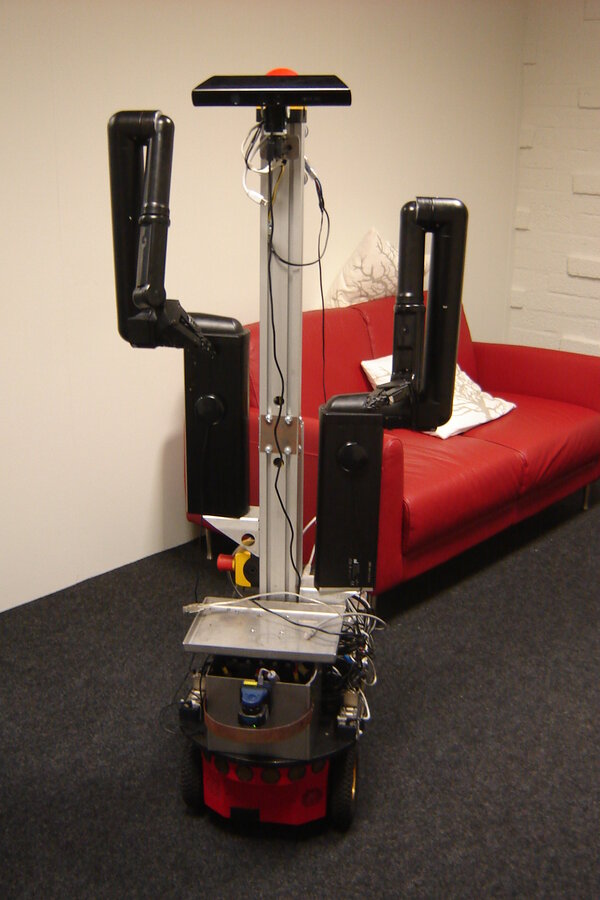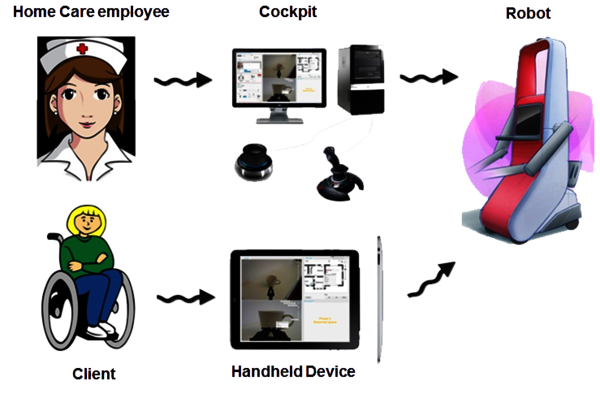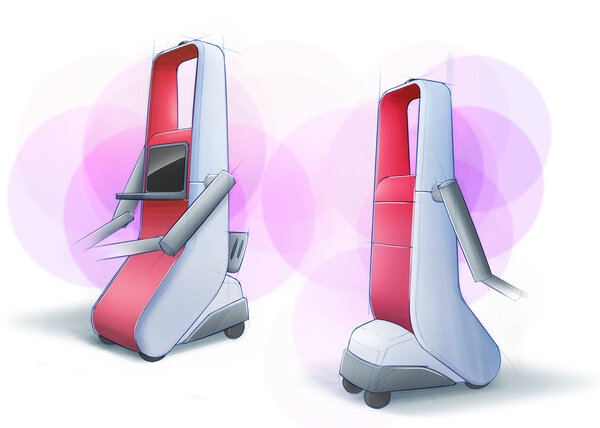ROSE
Description
Robot ROSE is the end result of the project TSR (Teleoperated Service Robot) subsidized by the Dutch ministry of Economic affairs and the province of Noord-Brabant. The goal of the project is the development of a tele-operated robot for home care applications. The robot helps people at home and is controlled by a home-care employee (who can control more than one robot) at a central location or by a client via a remote control (see figure below).
The client will get more independent and better care because the home care employee can focus on different tasks. The robot can also perform tasks autonomously, but the operator will always monitor the client and the robot. Important aspects of the robot are: safety, usability, and autonomy.
Robot ROSE is the third robot developed in this project and the result of all the experiences and developments of her two predecessors.
The robot has a four wheel driven platform and each wheel can be steered individually. In this way ROSE can move in any direction, it can drive as if it was a car and it also can turn on the spot as well as move sideways (in any direction). ROSE is equipped with a laser range finder and an ultrasound sensor ring to scan the environment and avoid obstacles during driving. To be able to both pickup objects from the ground and from inside the kitchen cabinets as well as reach the end of the middle of the dining table, ROSE is equipped with a lift mechanism that make it possible to both reach up and reach forward at the same time. ROSE is equipped with two 7 DOF arms by Exact Dynamics. With these arms ROSE is able to reach objects that are located behind different objects. ROSE is equipped with a screen so that clients can talk to the operator via video communication and are able to see who is controlling the robot. The most important eyes of ROSE are a stereo camera (Xbox Kinect). With this camera it is able to see depth and able to automatically pick up objects. The operator also sees what the robot sees through this camera. The camera is placed on a neck mechanism. With this neck you are able to look left or right and up or down.
In the spring of 2012 Robot ROSE was tested in an unoccupied apartment for the elderly of ZuidZorg in Waalre, like her predecessor. In the first round of experiments (end of March 2012) we experimented with ROSE and three operators located in the room next to the robot. In the second round of experiments (mid April 2012) the operators were remotely controlling the robot from 5 kilometers away (in ZuidZorg Veldhoven). In the third round of experiments (beginning of May 2012) we invited clients to look with us and think about future improvements and wishes.

Aditional information
- Start date:
- 01-10-2009
- End date:
- 01-06-2012
- Involved TU/e employees:
- Involved external partners:
- Keywords:
- Tele-operations
- Service robots
- Domestic robots
- User-system interaction,
- Master-slave system
- Cockpit
- Autonomy
- Home-care

